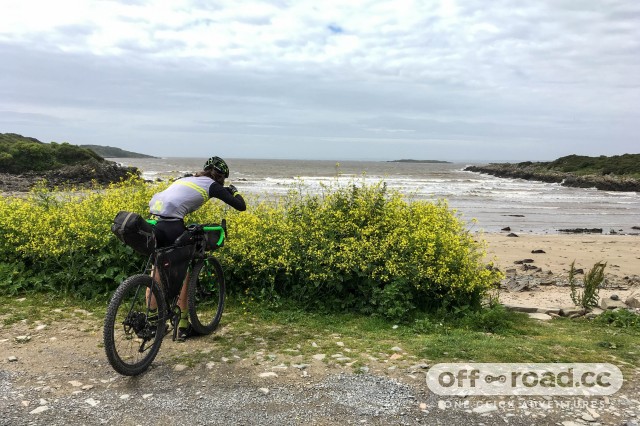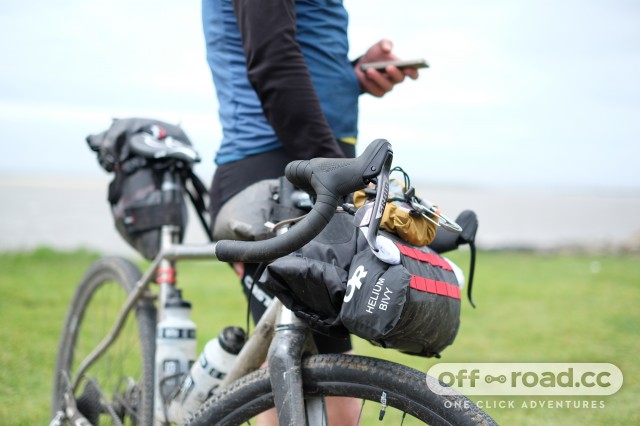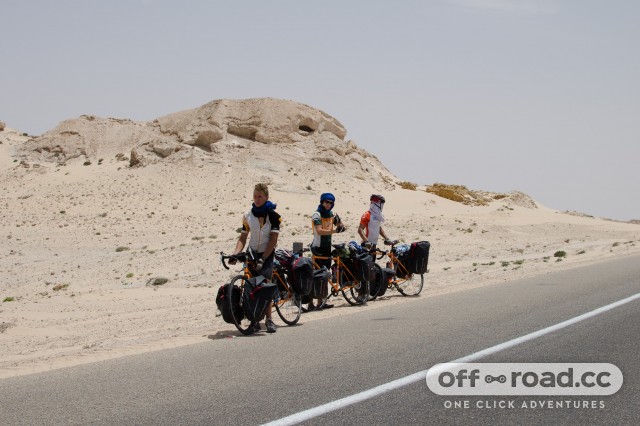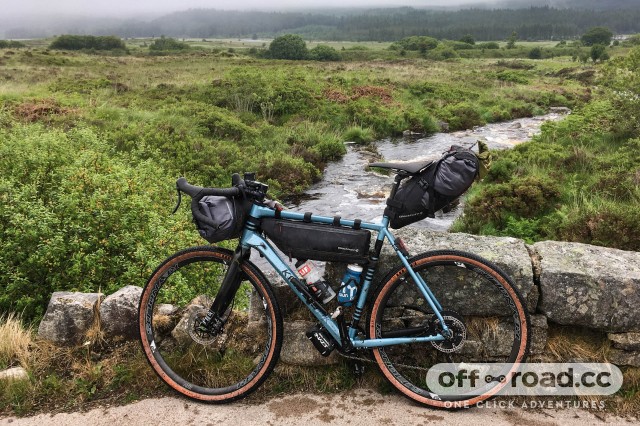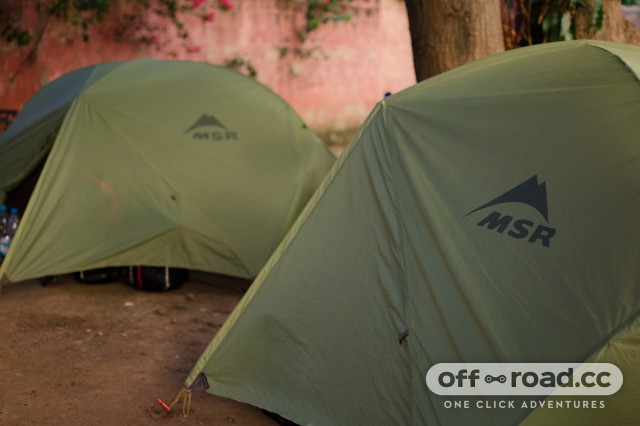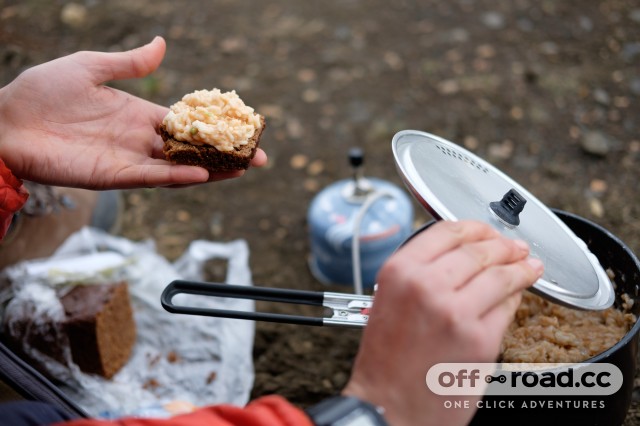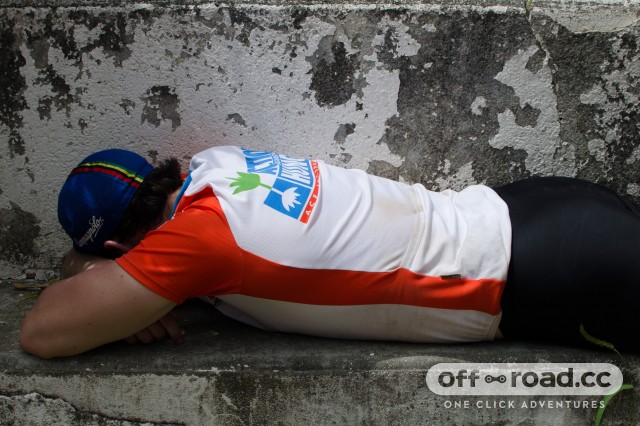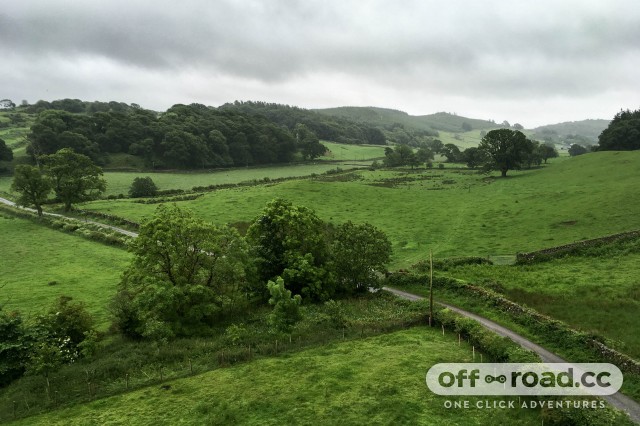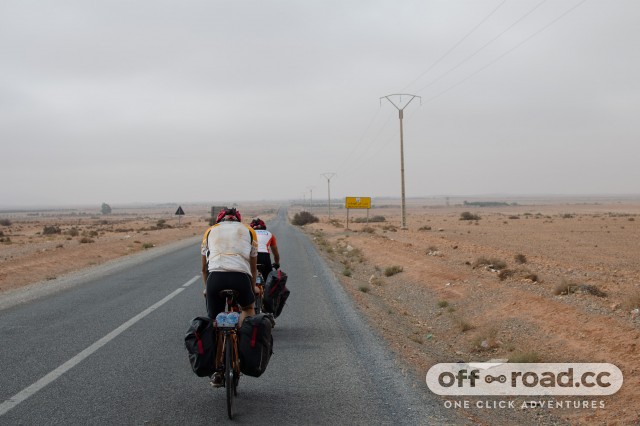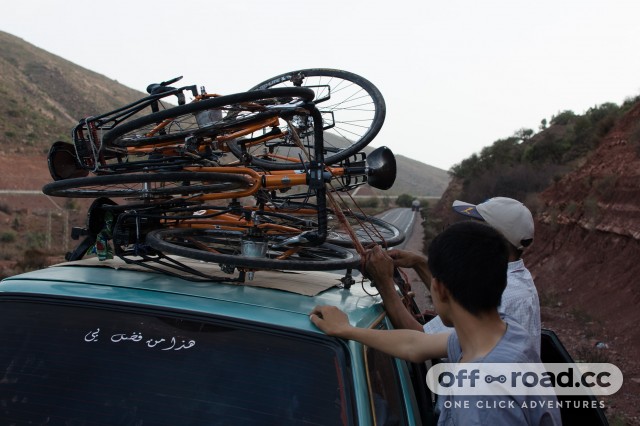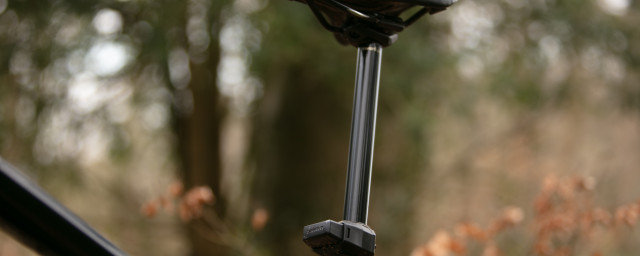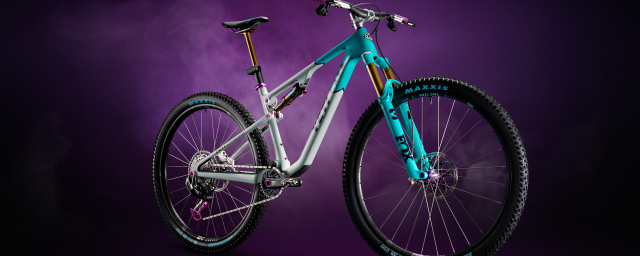How to go bikepacking: A beginner's guide to getting started
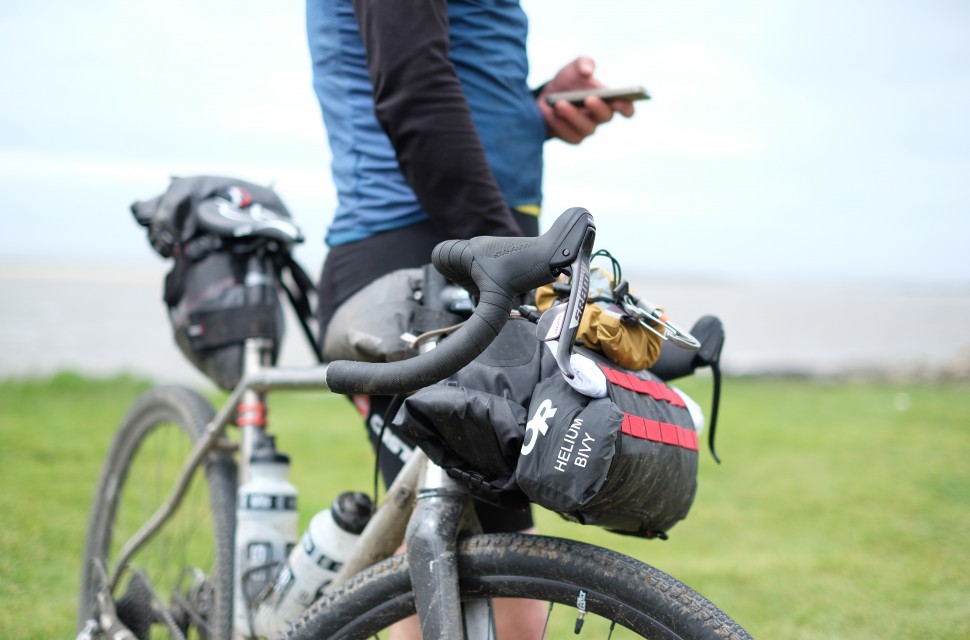
There’s an undeniable appeal to getting out on your bike, free to propel yourself wherever you want to go. Bikepacking expands your options, letting you travel longer distances over multiple days, exploring further than ever before. Getting into the game may seem a little daunting at first, but fear not, we're here to help you out.
- The best gravel and adventure bikes you can buy for under £1,000
- The best gravel and adventure bikes you can buy for under £2,000
- Buyer's Guide: Gravel & Adventure Bikes
There can be a misconception that you need to go out and get all sorts of specialist gear. Whilst in the long run that might be true, you can start off by using what you have. It’s much better to figure out what you need through experience rather than buying expensive gear that you may not end up using.
So what exactly defines bikepacking? There’s no real hard and fast rule, but it implies self-sufficiency on the bike, carrying everything you need to survive overnight or multi-day adventures. It's backpacking if you will, though with a bike you have the ability to travel further and do more – whether it’s on or off-road, shredding mountain bike trails, grinding out the miles on a gravel bike, or travelling on an expedition further afield.
We’ve put together a few tips for you for your first expedition, going through some of the things you might want to consider, including gear and bike setup, equipment required and planning routes. We’ll be posting additional articles in the coming weeks covering aspects of this in more detail too.
Getting your bike ready
The best bike to use is the one you already own and feel comfortable with. Rather than traditional touring with racks and panniers which require a dedicated bike, if you’ve already got something that works for you, it’s unlikely you’ll have to make many changes.
All you’ll need is a way to carry some luggage and you’ll be ready to go on your first adventure. Depending on how much you’re carrying it may be worth adjusting tyre (and suspension) pressures to compensate for the additional weight.
Longer term, you may want to consider adjusting the gearing of the bike so that pedalling is easier on the knees. Comfort is the watchword here – you’ll be spending plenty of time in the saddle with repeated days riding, something you might not usually be used to. Make sure you’ve got a comfy saddle, double-wrap your bar tape, fit ergonomic grips and perhaps consider a more upright riding position. You’re not in an ultra-race yet, and if you’re at that stage already then you probably don’t need to read this article.
I generally keep lights mounted on the bike, along with a GPS device with the planned route loaded. We’re hoping to get a dynamo setup in for the new year to test electrical solutions for more extended trips.
Carrying your gear
Of course, you’ll need something to carry all your gear in, and that’s where your bikepacking bags come in handy. Instead of the racks and panniers found on a classic tourer, you’ll be using soft bags that fit directly to the frame. Space is limited, but that encourages a lightweight approach that won’t affect your bike’s handling as much and will let you get the most out of your riding.
That said, there’s nothing to say you can’t use racks and panniers for some of your kit. For the ultimate in capacity there’s no doubt panniers still have the upper hand. Really though, the beauty is that there’s no one to tell you what’s right or wrong - just go out and have an adventure.
It’s possible to spend a small fortune on ultralight, quality gear – but to start with just use what you’ve got. In my own experience, it’s much better discovering what you need through experience, rather than wasting money on things that won’t work for you in the long run.
There are a lot of bags that you can fit onto a bike. The main load carriers will usually consist of a handlebar roll (or harness), a seat pack and frame pack. You don’t want the steering to feel too heavy, so I’ll try to keep lighter weight items like sleeping gear at the front. The seatpack tends to contain clothes and food. Heavier items will go in the framepack as this has a lower centre of gravity, to avoid affecting handling too much. Depending on the trip, I may not use all of these bags and will pack differently accordingly.
You can add various accessory bags for snacks or smaller bits and pieces. A top tube bag can be fitted at the front and rear of the top tube, whilst stem bags can be fitted by the bars for easy access to items on the go. A small accessory pocket on the front can usually be added too – mine contains a camera for easy access.
Depending on the mounting options on your frame and whether you’re using a full/partial framepack you’ll have a number of options for bottle mounts. You should have mounts on the main triangle and may have some under the downtube and fork legs. If not, it’s possible to tape extra cages where required.
In UK conditions I don’t like having a drink bottle under the downtube as it just gets sprayed with muck – instead consider something like the Lezyne Flow Caddy to carry your tools. The Salsa Cycles Anything Cage can give you some extra carrying capacity by strapping a dry bag to the fork legs.
Your first adventure
You definitely don’t need all the gear listed to get out on your first adventure. Two dry bags strapped underneath the saddle and to the handlebars, your usual daypack and a couple of bottle cages to carry water can see you through your first expedition. I highly recommend ski straps (like the Black Diamond or Voile straps) for lashing things to your bike securely. You won’t be able to carry a huge amount of gear, but this barebones setup is perfect for you to try it all out and see what it’s about.
For a more “professional” approach, consider renting gear. Pannier.cc have bags and camp gear to rent and should be offering complete bikes as well soon. This gives you the perfect chance to try things without commitment and see whether it’s for you or not.
Essential Gear
We all like travelling light, and you’ll have more fun riding without a load of weight, but as with most things, this often necessitates spending a lot of money. Use what you own first and figure out what you need before you start going out to get the lightest and greatest.
I’d also say that packing smartly and efficiently is a far more cost-effective way of keeping a light setup. All that said, there is definitely a place for creature comforts – keeping your spirits high is just as important as saving a few extra grams.
Other than your usual riding gear - make sure you're kit is adaptable to varying weather conditions - a bikepacking trip will require you to carry camping equipment – that primarily means sleeping gear and something for food preparation (as well as a change of clothes for camp). If you want to invest in one thing, your sleeping solution i.e. shelter, sleeping bag and mat, is likely where you can save the most weight in your overall setup.
For UK conditions, you’ll probably want a tent for proper shelter. Whilst tarps and bivy bags are possible for shorter (and dry) trips, you are going to be sacrificing some protection from the elements. If you can stretch to it, I would usually go for a down sleeping bag as it’s lighter and more packable than a synthetic insulated equivalent. Alpkit does a range of great value bags. Foam mats are cheap and basically indestructible but are bulky and more difficult to pack. Inflatable mats are comfortable and lightweight but come at a steep price, though I personally love my Thermarest NeoAir XLite.
Finally, you’ll want some kind of cooking gear – your choice will likely be between a gas or meths/alcohol stove. For the ultimate in lightweight, choose an alcohol stove that is incredibly simple at the expense of convenience. A gas stove is probably better to start off with, allowing you a little more flexibility with your cooking. A windshield and simple aluminium pot(s) will finish off this kit.
You’ll also want to carry a repair kit and first-aid kit; we’ll be covering the contents of ours in another article. Carry a phone to be able to contact the outside world and a spare battery to charge essential electronics like your GPS device.
Your first tour
It can be intimidating planning your first route. If you want to start exploring in a more controlled environment there are supported bikepacking events such as The Distance that I took part in this summer and Pannier.cc’s tours. However, planning your own ride really shouldn’t be too hard. Yes, experience comes into it – but trial and error, a bit of uncertainty and adventure are always going to factor into the equation.
If you’re doing it yourself, bear in mind that you’ll be carrying luggage, and you’ll be riding several days in a row so you may not be able to cover the distances you usually would. Start shorter than you think, and built it up from there.
Consider stringing together routes or trails you already know. See if there are existing trails or routes in the area. Check out the Crossduro routes put together by The Racing Collective for a real challenge. Resources like Strava segments or heatmaps can help, though I find these less useful for off-road trails.
I do most of my planning using RidewithGPS which has a wide selection of map layers that make planning easier. I make extensive use of the OSM Cycle Map layer as well as satellite imagery for finding finer trail details. In the UK, Ordnance Survey maps (which can be viewed for free on Bing maps) provide incredibly fine detail for planning.
The main things to consider are where you’ll sleep for the night and where to pick up supplies (primarily water). This could be a campsite, bothy, hostel, or even wild-camping. Many landowners will be happy to let you camp if you ask, but do remember to respect access laws throughout your ride. Whilst access laws in Scotland are slightly different to the rest of the UK, the general principles in the Outdoor Access Code remain the same.
The primary point to make here is that you should respect the places you’re travelling through. Read the Countryside Code, but the most important thing to take away is to use the principle of “leave no trace” – carry out what you carry in and aim to leave the environment in a better state than you found it in. Urinate at least 30 metres from water sources, and if you need to defecate, make sure to bury it and do it as far away as possible from buildings, water sources or farm animals.
Navigation
Whilst I’ll generally use my GPS device with my pre-planned route loaded on it, if I’m off the beaten path I do carry a compass and map. They’re an indispensable and reliable backup if electronics fail. Be prepared for some unexpected things to happen and be flexible. The route you plan is unlikely to be perfect from the start – it’ll need a bit of work and trying different things to figure it out completely.
If you get more into this, at some point it will be worth learning how to navigate properly using a compass and maps, as well as doing an outdoor first aid course. Preparation is key, and as things become more adventurous you’ll be further from support and help.
Putting it all together
The key thing to do is go out and see what you can do. Don’t expect everything to go perfectly from the get-go and take things easy to begin with. You’ll quickly gain the experience to plan longer tours. Check back here over the next few weeks for some more detailed guides on various aspects.
There are many ways your exploration can occur – off-road, on-road, gravel, tarmac, mountain bike trails. There are different ways to do it and different ways of carrying the gear you need. Whether you travel fast and light, or slow and comfortable, it doesn’t matter. Go out, go on an expedition, have an adventure!
Are there any tips you have to help others get started? Or any mistakes you've made that you can help others avoid? Let us know in the comments below.
You might also like:
- Bikepacking basics: bike repair and first-aid kit
- 13 of the best ways to attach gear to your mountain or gravel bike
- Can you spend a night in the hills and still make it into work on time?
